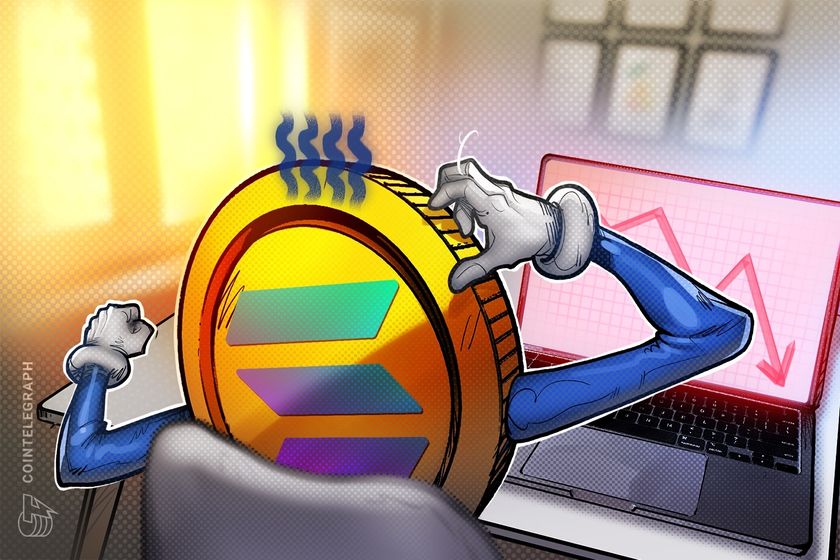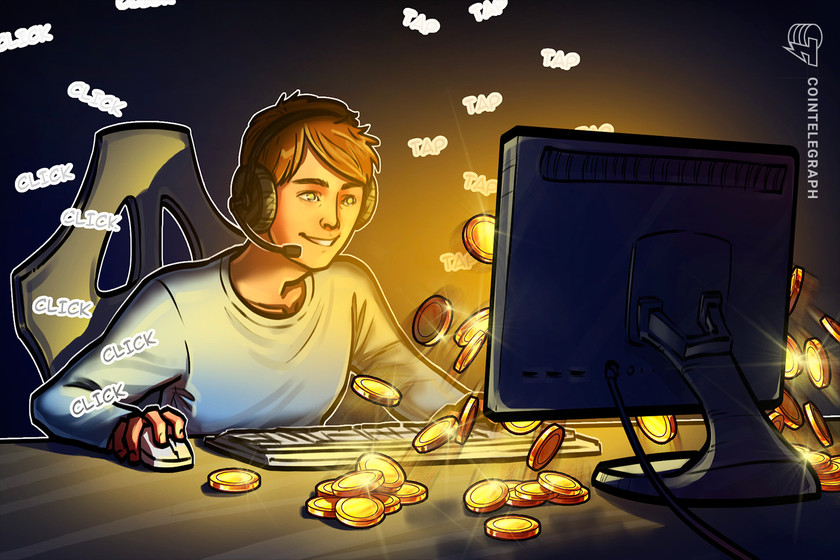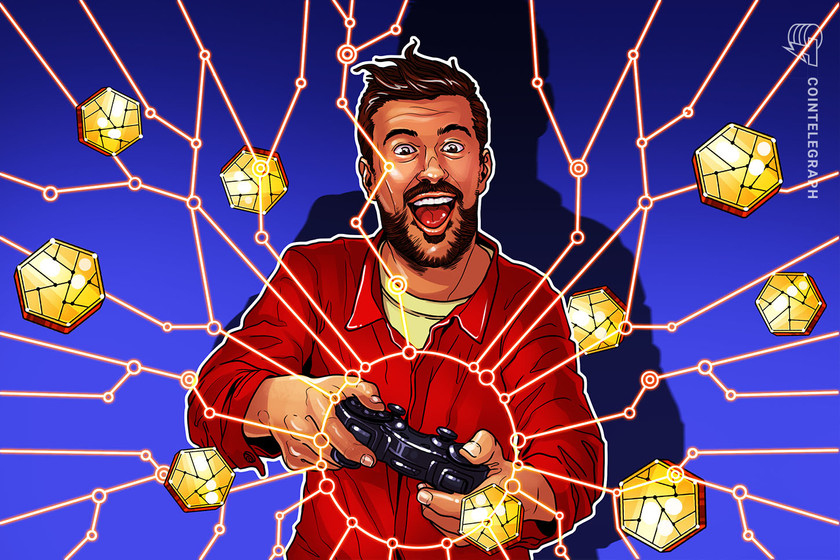
Immutable co-founder Robbie Ferguson highlights the potential for Web3 gaming to cause a shift in digital property ownership and value sharing.
There is no substitute for experience. Even when an experience can feel regrettable, like getting your brother’s Runescape account banned.
Robbie Ferguson grew up as an avid gamer, accumulating thousands of hours playing his favorite games. One fateful day, he logged into Runescape and set in motion a series of events that would forever change his view on digital ownership and the world of Web3 gaming:
“I logged into my brother’s Runescape account which we shared and went into the wilderness and lost all his Red Dragon Armor. The next day, I felt so bad, I went and bought gold from a gold farm to replace it. The following day, the account was banned.”
The incident left a mark on Ferguson, a software developer who became involved in the blockchain space through his introduction to Bitcoin in 2014. His interest was super-charged in 2015 with the advent of Ethereum and the potential of the ecosystem.
Ferguson’s Runescape banning incident provided the impetus for his move into blockchain gaming development, having been left frustrated by what he described as the “arbitrary impunity” in which gaming economies and assets were governed by mainstream companies.
Speaking to Cointelegraph during the Token2049 conference in Singapore in September 2022, Ferguson unpacked how he, his brother James and Alex Connolly went on to co-found blockchain technology firm Immutable in 2018 after their first attempts to build a decentralized game.

Ether Bots, their first attempt at an Ethereum-powered game, taught the trio what should go on-chain versus off-chain and laid the foundation for what would become an infrastructure platform for building Web3-based games and nonfungible token (NFT) functionality. Furthermore, Ferguson was intent on disrupting the status quo of digital ownership of in-game assets:
“The reason we started with games is because they’re by far the most exciting use case for NFTs. There’s $110 billion spent every year on digital property that people have zero rights to and it’s a complete scam.”
With lessons learned from their first foray, the successful launch of blockchain-powered play-to-earn tactical card game Gods Unchained played an integral role in establishing Immutable, a platform for blockchain development firms to build Web3 games with NFT integration.
Understanding the solution
Immutable consists of two separate but intrinsically linked segments. ImmutableX is the company’s Ethereum layer-2 NFT scaling platform, while Immutable Studios is the gaming development arm of the firm.
Ferguson maintains that ImmutableX, the Ethereum-based layer-2 solution NFT platform, took invaluable lessons from the development of Gods Unchained, which shaped the functionality of the infrastructure upon which other blockchain games are now being built:
“There’s been a lot of gaming platforms built out there that don’t actually understand the needs of games, from a tech perspective, from a services perspective and from a user experience perspective.”
The launch of Gods Unchained saw 50 million NFTs minted in its first week, which then led to a price surge due to high gas fees in the Ethereum ecosystem. This highlighted a major need to scale and reduce minting costs in order to make a Web3 NFT-packed game viable for any company, as Ferguson explained:
“If this is gonna go at scale we need to make this stuff zero cost to create. If you take a single medium-sized game with 100 million players, if every one of them is trading just once or twice per day, you have a cost basis of tens of millions of dollars per week to that company.”
ImmutableX is focused on making everyday in-game items tradable in low-cost bands. Ferguson used Gods Unchained as an example again, with trading cards only down around 10% from market highs because “people trade cards to use in the game, not because the price of Ethereum is $1,200 or $4,000.”
While high-value NFTs will always form part of an in-game marketplace, usability should drive in-game economies, according to Ferguson. This then leads to the question of profitability and how Immutable is able to offer free minting of NFTs, which is touted on its website.
Immutable facilitates this by paying for all the costs of NFT minting using zero-knowledge (ZK) rolls ups, providing economies of scale that allow billions of transactions to be bundled for a “reasonable cost.” That is still an eight-figure dollar sum for Immutable, but Ferguson highlighted the caveat:
“We get to make it so anyone can create these assets for free via incredibly valuable economies and instead be monetized by taking small clips on every trade, which means we have the exact same incentive as games and users do, which is to maximize volume.”
Giving back to the Ethereum network
Immutable’s efforts to solve the scalability of NFT minting to power blockchain-based games owe its thanks to Starkware, the Ethereum layer-2 platform that pioneered zk-STARK proof technology.
The technology also allows Immutable to lay claim to being carbon neutral, with Ferguson touting the ability to mint 600,000 NFTs in a single proof that only takes up a fraction of a block in the Ethereum network.
Nevertheless, zk-Rollups and Ethereum’s Merge have laid an important platform in allowing infrastructure providers like Immutable to build for an increasing number of Web3-based games in the future:
“We’re barely at a fraction of a percent of the scale of transactions per second that NFTs will eventually take. If we’re looking at transforming gaming, with billions of gamers worldwide, even then trading a few assets every day is going to radically increase the demand for the stack.”
According to Ferguson, Immutable also played a role in developing batched minting and deferred minting, two common NFT scaling paradigms used today by the likes of NFT marketplaces like OpenSea to Nifty Gateway.
Why blockchain?
Blockchain purists have often questioned whether some industries need to use the technology to improve existing systems. Ferguson considered this question carefully, highlighting his belief that digital users deserve to have rights to the items and assets they acquire in any digital environment:
“The mission should be to create a better game, which under the hood uses Web3, so that people have a better experience and have digital property rights. It’s this lie that has been sold to consumers for the past three decades that just because something is intangible, you should have zero rights to it.”
Ferguson believes that the success of the sector is already playing out, highlighting more than $9 billion worth of investments into Web3 gaming over the past 18 months. This, in turn, is set to create a shift in equity sharing:
“The social benefits are huge. We’re democratizing access to economies with people building assets in-game and the ability for anyone to create content for games, Web3 can now empower those people to monetize much better.”
While Web3 may put ownership in the hands of users, that does not mean that mainstream AAA companies are not keeping tabs on the burgeoning sector. As Ferguson explained, these firms will look to position themselves ahead of the disruptive technology if Web3 games become a new standard that is in demand.
Immutable, meanwhile, continues to grow. The Australian-based blockchain technology company employs over 300 people and has raised over $300 million from investors including Coinbase, Tencent, Galaxy Digital and Animoca Brands.













